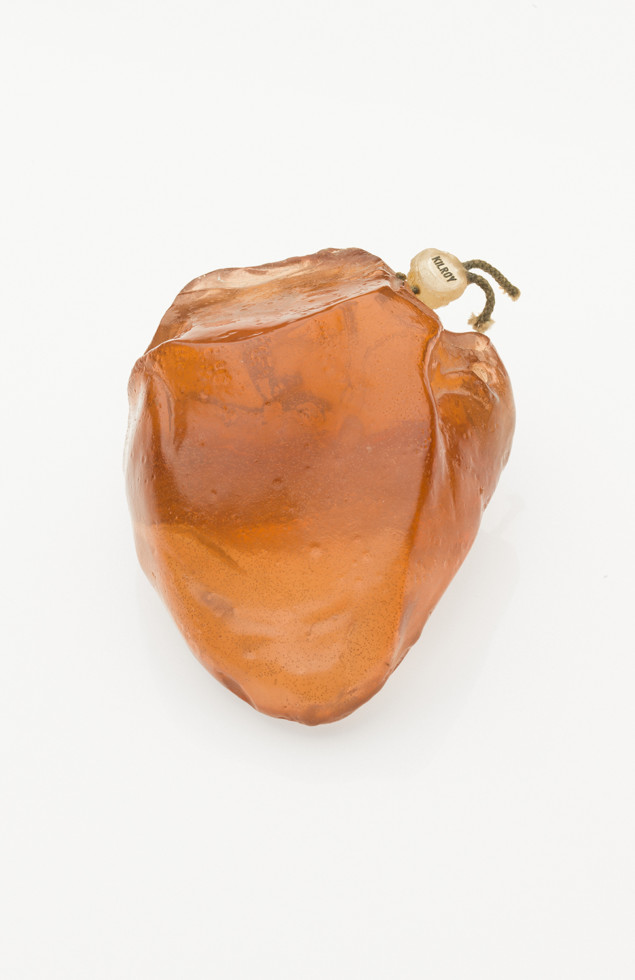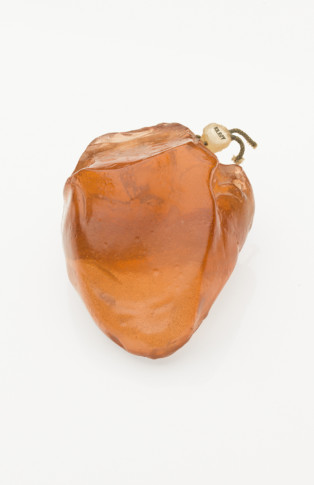
Carl Fredrik Reuterswärd, Kilroy Heart, 1968-1969 © Carl Fredrik Reuterswärd/ Bildupphovsrätt 2019
Introduction
Carl Fredrik Reuterswärd’s (1934–2016) career spanned almost seven decades, several pseudonyms, and most artistic techniques. From the late-1950s through the 1960s, Carl Fredrik Reuterswärd was part of a vibrant avant-garde art scene that has also to some extent become synonymous with the early years of Moderna Museet. Already in the museum’s inauguration year, 1958, Reuterswärd appeared at Moderna Museet with his performance/happening Dialogue with Fox, Physical Exchange, where he appeared on stage and conducted a conver-sation with a fox. One of Carl Fredrik Reuterswärd’s undoubtedly best-known projects is Non Violence, whose revolver with its barrel tied up in a knot has become a well-known element as a public sculpture in cities around the world.
The exhibition Alias: CFR focuses on two sides of Carl Fredrik Reuterswärd’s multifaceted work. In part on Kilroy (1963–72), an intricate installation and group of objects, and in part on a series of expressive, monumental drawings from the late 1990s.
In January 1963, Carl Fredrik Reuterswärd published the following notice in the New York Herald Tribune:
CARL FREDRIK REUTERSWÄRD
Closed for holidays 1963-1972.
During this proclaimed holiday period, Reuterswärd intended to create nine objects under the collective title of Kilroy. The advertised holiday was serious as well as humorous, and asserted both the artist’s freedom and his rejection of established patterns. Perhaps it should be interpreted as Reuterswärd taking a holiday from himself, an opportunity for both internal and external exploration. Kilroy is a poetic and simultaneously ambiguous and esoteric group of works, and the presentation of them at Moderna Museet Malmö features objects, as well as lasers and sketches related to the work.
The complex Kilroy project spanned nine years and countless techniques and materials, Kilroy was everyone and no one, leaving his name for anyone at all. The choice of materials suggests something both grounded and airborne, and the object engender a symbiotic relationship between the intuitive and the intellectual, the unconscious and the conscious, the tactile and the conceptual. A visual poetry emerges in which an existential condition unequivocally can be read in the work and the objects placed on a mirror disc after the two sides, ”You” and ”Me”.
Carl Fredrik Reuterswärd was an early adopter of new techniques such as lasers and holograms in his art. Using lasers allowed him to expand the sculptural object and its potencies to become something both material and immaterial, both enduring and fleeting. The laser light points straight down at Kilroy’s heart – it illuminates the encounter between Me and You and becomes an immaterial impersonation of this space.
The fall of 1989 is often and understandably enough considered an important inflection point in Carl Fredrik Reuterswärds’s life. He had a stroke that forced him to switch from his right hand to his left. With unrelenting will, the artist practiced his ability to re-create. Carl Fredrik Reuterswärd described the time after his stroke as in part a kind of liberation, and the lines and subjects seem to suggest a searching both back and forward in time. The works from the late 1990s are driven on by a movement that is both compositional and purely technical. Looking at these pictures, the application of the pastel strokes is almost physical. They radiate enthusiasm.
In the monumental drawings mythological figures and acrobatic exercises are prominent, and even if the visual style differs from his earlier idea-based works from the 1960s and 1970s, they are all tied together by the artist’s continual exploration of new styles and approaches. The intricate (role) play among the various aliases and pseudonyms that went on throughout Reuterswärd’s entire life boiled down in the end to the man himself, the mysterious and dreamlike united with hope, existential doubt, and conceptual humor.
Text: Andreas Nilsson, curator

